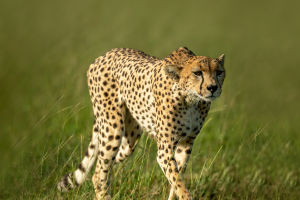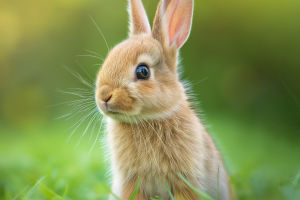Giraffe: The Towering Marvel
Giraffes are the tallest land mammals on Earth, renowned for their extraordinary height and unique appearance.
In this article, we'll explore the fascinating characteristics, habitat, diet, and conservation status of giraffes, shedding light on why they are such remarkable creatures.
Unique Physical Characteristics
Giraffes are instantly recognizable due to their elongated necks, which can reach up to six feet in length. This impressive feature allows them to browse on leaves and foliage high above the ground, primarily from acacia trees. Despite their necks being so long, giraffes have the same number of neck vertebrae as humans—seven. Each vertebra is elongated, contributing to their towering stature.
Their unique coat patterns, consisting of irregular brown patches separated by lighter lines, serve as natural camouflage in their savanna and woodland habitats. The pattern varies among individuals, much like human fingerprints, and plays a crucial role in helping them blend into their surroundings and evade predators.
Habitat and Distribution
Giraffes are native to Africa, and predominantly found in the savannas, grasslands, and open woodlands of sub-Saharan regions. They prefer areas with abundant food sources, such as acacia, mimosa, and other browse species. Various subspecies of giraffes inhabit different regions, with the most well-known being the Masai giraffe, the reticulated giraffe, and the northern giraffe.
Diet and Feeding Habits
As herbivores, giraffes primarily feed on leaves, fruits, and flowers. Their long necks and prehensile tongues—often measuring up to 18 inches—enable them to reach foliage that is inaccessible to many other herbivores. Giraffes spend a considerable portion of their day foraging, consuming up to 75 pounds of food daily. Their unique feeding habits not only help them thrive but also play a vital role in shaping their ecosystem by promoting tree growth and health.
Giraffes are known for their social behavior, often seen in loose groups called "towers." These groups can consist of females, their young, and a few males. Social interactions among giraffes include grooming, necking (a behavior where males engage in combat by swinging their necks), and vocalizations, which are subtle yet fascinating.
Conservation Status
Despite their iconic status, giraffes are facing threats that have led to a decline in their populations. According to the International Union for Conservation of Nature (IUCN), giraffes are classified as vulnerable, with some subspecies considered endangered. The primary threats include habitat loss, poaching, and conflicts with humans.
Giraffes are not only remarkable for their height but also for their role in maintaining the balance of their ecosystems. As we continue to study and appreciate these gentle giants, it is essential to support conservation efforts that protect their habitats and ensure their survival for future generations. So, Lykkers, by learning more about giraffes and advocating for their preservation, we can contribute to the protection of one of nature's most extraordinary creations.
Giraffes 101 | Nat Geo Wild
video by Nat Geo WILD


